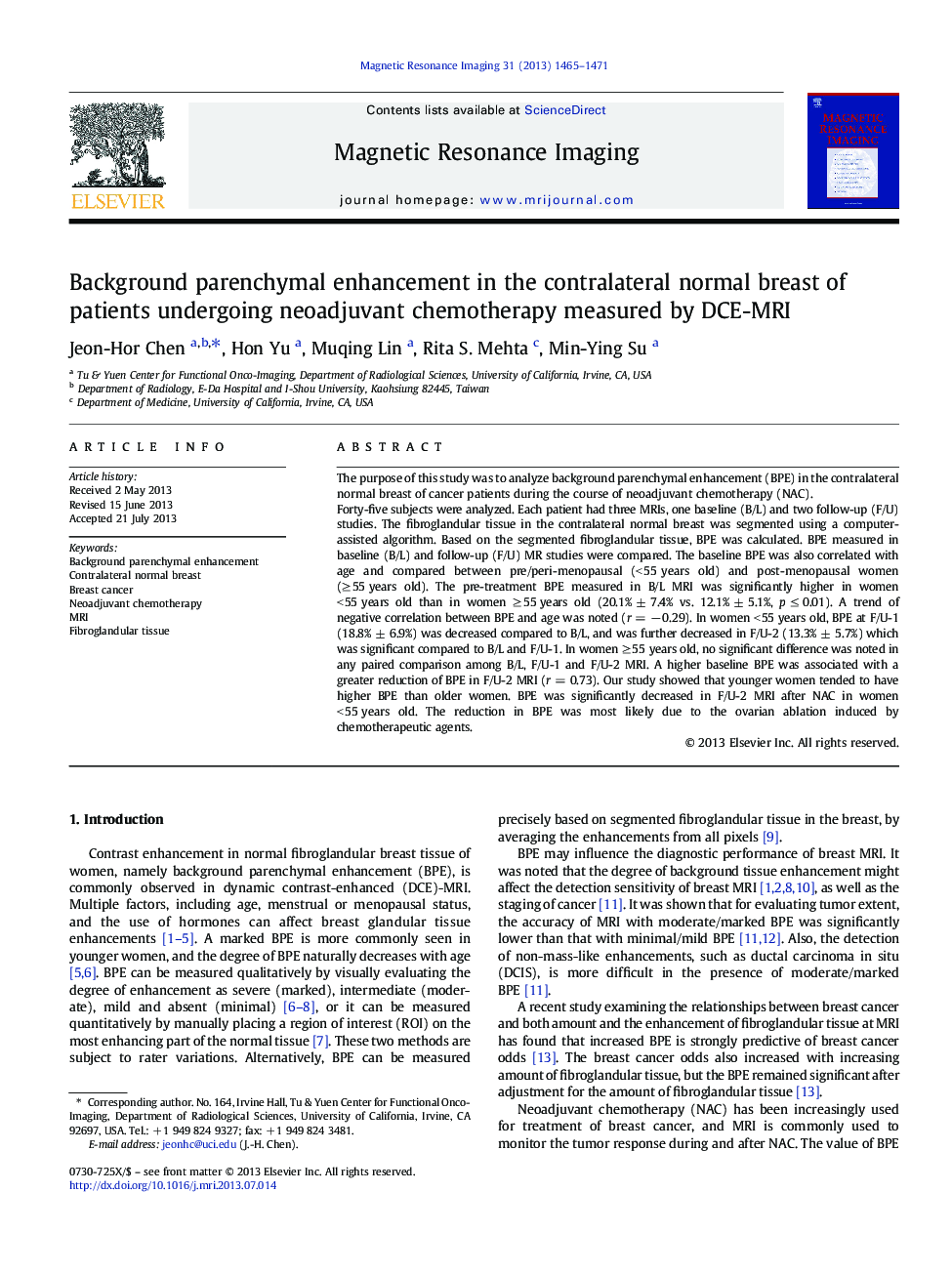| Article ID | Journal | Published Year | Pages | File Type |
|---|---|---|---|---|
| 10712640 | Magnetic Resonance Imaging | 2013 | 7 Pages |
Abstract
Forty-five subjects were analyzed. Each patient had three MRIs, one baseline (B/L) and two follow-up (F/U) studies. The fibroglandular tissue in the contralateral normal breast was segmented using a computer-assisted algorithm. Based on the segmented fibroglandular tissue, BPE was calculated. BPE measured in baseline (B/L) and follow-up (F/U) MR studies were compared. The baseline BPE was also correlated with age and compared between pre/peri-menopausal (< 55 years old) and post-menopausal women (â¥Â 55 years old). The pre-treatment BPE measured in B/L MRI was significantly higher in women < 55 years old than in women â¥Â 55 years old (20.1% ± 7.4% vs. 12.1% ± 5.1%, p â¤Â 0.01). A trend of negative correlation between BPE and age was noted (r = â 0.29). In women < 55 years old, BPE at F/U-1 (18.8% ± 6.9%) was decreased compared to B/L, and was further decreased in F/U-2 (13.3% ± 5.7%) which was significant compared to B/L and F/U-1. In women â¥Â 55 years old, no significant difference was noted in any paired comparison among B/L, F/U-1 and F/U-2 MRI. A higher baseline BPE was associated with a greater reduction of BPE in F/U-2 MRI (r = 0.73). Our study showed that younger women tended to have higher BPE than older women. BPE was significantly decreased in F/U-2 MRI after NAC in women < 55 years old. The reduction in BPE was most likely due to the ovarian ablation induced by chemotherapeutic agents.
Keywords
Related Topics
Physical Sciences and Engineering
Physics and Astronomy
Condensed Matter Physics
Authors
Jeon-Hor Chen, Hon Yu, Muqing Lin, Rita S. Mehta, Min-Ying Su,
